REVIEWED: Hammerhead Karoo 2
The Hammerhead Karoo 2 is an amazing bike computer with South African roots. But can it stand up to the big boys from Garmin and Wahoo?
In South Africa, Garmin is by far the most dominant bike computer brand. So much so that riders use “Garmin” to refer to any GPS device. Make no mistake, Garmin’s computers and smart watches are world-class, but if you’re in the market for a new bit of bling on your handlebar, there are some very strong competitors around.
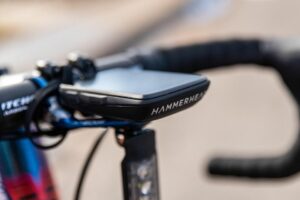
One of those is Hammerhead – a relative newcomer to the bike computer scene. They’re headquartered in New York, USA, but the company was co-founded by a South African, Piet Morgan, who grew up in Joburg and was childhood friends with four-time Tour de France winner Chris Froome. (Froome is an investor in the company and plans to do more work with them after he retires.)
The Karoo 2 is more smartphone than GPS in design and appearance, with a durable colour touchscreen that features anti-glare texturing and a water-repellent coating. Like a phone, it also features a quad-core processor for speedy operation and smooth screen graphics. It connects to anything and everything, from ANT+ and Wi-Fi to 4G and GPS, and there’s 32GB of internal storage for maps, data and software. Other features include a thermometer, three-axis accelerometer, magnetometer and gyroscope.
In short, you can harvest all the data.
The unit itself weighs 131g, or 167g with the included handlebar mount, and in terms of pricing, it comes in at just under R7 000 shipped from the US, including South African taxes. The Garmin Edge 1030 Plus competes directly on spec and costs R12 099, which makes the Karoo 2 a very tempting proposition.
So, what’s it like to use?
Hammerhead Karoo 2 – Nice to meet you
The unit ships in pretty fancy packaging – you get that Apple-like dopamine hit as you navigate the flaps and slide open the 100% recyclable box. Inside is the unit itself, a charging cable, the handlebar mount (more on that later), a universal quarter-turn adaptor, an Allen key for installing the mount, and a stretchy lanyard.
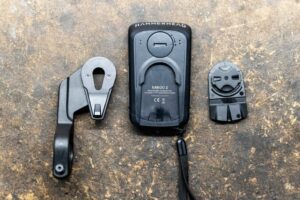
The unit is solid in your hand: you can feel the quality of the build. Setup is a piece of cake – you connect directly to your home Wi-Fi and follow the steps on the screen.
Unlike some other GPS units, you don’t interact with the Karoo 2 via an app on your phone. The device merely records your ride and shares it to third-party apps like Strava, Komoot, TrainingPeaks or Ride With GPS. It’s a logical decision: When software like Strava is so good, why try and reinvent the wheel? It’s likely that this will suit the majority of users, but there will be some people who don’t have a Strava subscription, and who don’t want a Strava subscription. They might feel cheated of a dedicated, free app to track their fitness, as Garmin users get with Garmin Connect.
Bar mount
One of the most divisive elements of the Karoo 2 is its proprietary out-front bar mount. Hammerhead claims that it has a lower profile than anything else on the market, which improves aerodynamics, and they say that the dual-lock mechanism is stable and offers a wider contact area for greater support. However, some riders – especially ultra-endurance athletes who rely heavily on their GPS – are quite fussy about their mounts and prefer Garmin’s universal quarter-turn system. The quarter-turn adaptor that comes with the Karoo 2 fitted snugly on our test unit, but certain users have complained about a loose fit and associated issues with rattling and dislodging during riding.
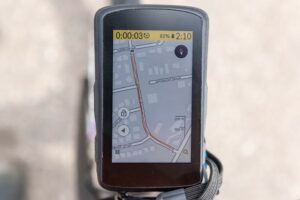
I didn’t test the quarter-turn mount on a ride, to be fair, but the proprietary mount performed very well. Once attached to my handlebar, the unit clicked into place with a reassuring snap. It was a dream on tar, and it held firm on rough gravel roads. I even tested it on some mountain bike trails – on very bumpy single track – and there were no issues, although it was a bit disconcerting watching the GPS above my ducking and diving fork, and thinking about the strain being placed on the plastic with each thud and jolt… (The supplied lanyard loops through a holder near the USB port and around your handlebar while you’re riding. This will protect your Karoo 2 from a fall should things go pear-shaped on the mount.)
Another issue is that the mount leaves no space to plug a USB cable into the port to charge while you ride. This is crucial for ultra-distance events – riders of such events will have to come up with another plan using a different setup with the quarter-turn adaptor.
Hammerhead Karoo 2 – the ride
Getting to grips with the interface took a bit of practice – there were a few “false start” rides when I pressed the wrong button. But eventually it all made sense. The menus are clear and easy to navigate using the touch screen, and the default profiles can be customised for the kind of riding you do.
Only having a heart rate monitor – no power meter or cadence sensor – I fiddled with the default profile to show navigation on the first screen, all my ride metrics on the second screen (heart rate, speed, distance, temperature, ride time etc.) and hill- and elevation data on the third screen. You swipe between the screens as you would on a phone.
Speaking of hills, one of the Karoo 2’s standout features is Climber, which automatically triggers when you get to a hill on a pre-defined route. You’re immediately shown a graphic representation of the hill you’re on, with distance- and elevation remaining to the summit, as well as instant feedback about gradient and current height above sea level. Depending on your personality, this is either amazing or soul-destroying. Approaching Uitkyk Pass in the Cederberg, I must say, I didn’t enjoy seeing 18km and 800m remaining! But it’s awesome tech and it works reliably and accurately.
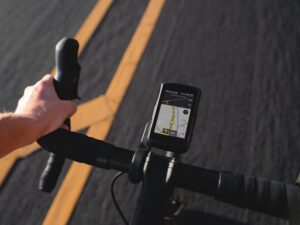
Navigation is probably a core feature for buyers of this kind of device, and the Karoo 2 does this superbly. Maps are displayed clearly on-screen in a very Google-like way; and turn-by-turn directions are legible and easy to follow. A massive plus is that you get free global map coverage with your device – you can download an entire country via Wi-Fi.
To use navigation and Climber, you need to choose a route when you start your ride. Routes can be created using rides you’ve done on Strava – or that other people have done – or by importing .GPX and other files using the Hammerhead online dashboard. Once you’ve done the deed on your laptop, your device will import the ride automatically when it’s connected to Wi-Fi or mobile data.
Usability and battery life
The Karoo 2 pairs with your phone using Bluetooth and displays notifications in a relatively unobtrusive way. Still, I decided to turn notifications off. (I ride to get away from that stuff!) Swiping down on the screen brings up a quick menu to toggle notification alerts and other settings, including battery save mode. Selecting this mode turns the screen off by default – it only turns on again if there’s a turn coming up, or if you trigger Climber on a hill.
I used battery save mode on The Ceder and the battery life was impressive. We started in freezing temperatures at 4am (cold is a killer of battery life) and the Karoo 2 helped me get to the finish 15 hours later. I might have been utterly broken, but the Karoo still had 3% battery left…
The touchscreen itself is sensitive but not overly so, and it works when you’re wearing gloves. You can also operate most features using the buttons on the side, but I didn’t find that necessary. Hammerhead claims that the Karoo 2’s screen has the “largest colour spectrum and twice the pixel density of its closest rival” – it certainly seems that way. The screen is bright and crisp, and graphics display beautifully – especially the coloured graphs that track your heart rate and elevation. The glass also feels durable, and we certainly tested its waterproof credentials: Our test unit got drenched and covered in mud over and over again and it’s still going strong.
Final word
The Karoo 2 is a really fun GPS to own and use. If you have a touch-screen smartphone, you’ll have no problems with the interface and user experience. You’ll also be blown away by the detailed maps and the plethora of connectivity options. (There aren’t many other GPSs that have a SIM card slot…) Data nerds will be hard-pressed to find a metric they can’t measure, and serious riders will be impressed by the quality of the unit and how solidly it’s built. Everything you can do or track on a premium Garmin or Wahoo, you can do on the Karoo 2, including Strava Live segments.
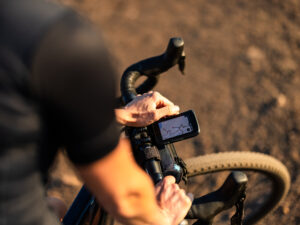
The mount might cause a headache, especially if you need to charge the GPS while you ride, but you should be able to make a plan using the quarter-turn adaptor. And there’s no partnership with Discovery Vitality. If you’re on that particular hamster wheel, you’ll only get 100 points for a ride via Strava.
Those niggles aside, it’s a great option for anyone who wants to take their riding to the next level – either by using ride data to keep to a training programme, to improve your daily workouts, or because you want to explore some off-the-beaten-track routes. It’s very well-priced compared to similar devices, and the South African inspiration is awesome.
There is no Hammerhead agent here at present, however, so you have to order directly from the US. The order-to-delivery process took about a week and half. After the device had been shipped, we received a mail from FedEx regarding South African taxes, which we paid via EFT. The price of US$399 equated to about R5 850, and the tax was R1 103 – a total cost of R6 953. Please note that this process might be different for each order, but it’s a good idea of what to expect.
For a full list of specs, check out hammerhead.io
Also read a more detailed review at bicycling.com in the US.
READ MORE ON: bike computer gps hammerhead new tech reviewed



